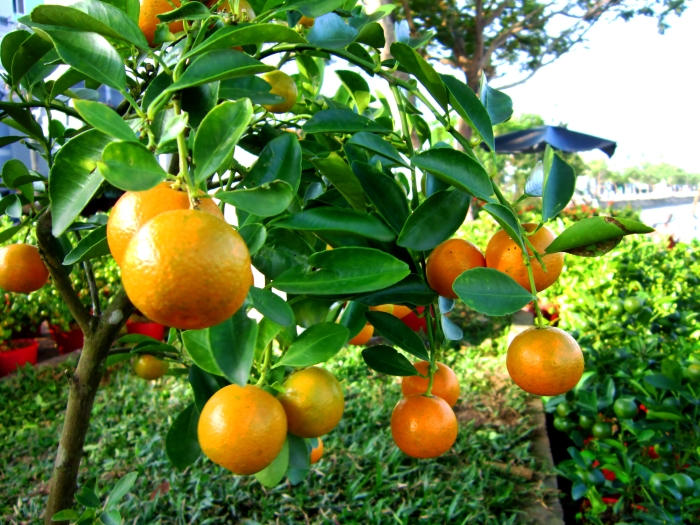Round Kumquat
(Citrus japonica)
Round Kumquat (Citrus japonica)
/
/

Bùi Thụy Đào Nguyên
CC BY-SA 3.0
Image By:
Bùi Thụy Đào Nguyên
Recorded By:
Copyright:
CC BY-SA 3.0
Copyright Notice:
Photo by: Bùi Thụy Đào Nguyên | License Type: CC BY-SA 3.0 | License URL: https://creativecommons.org/licenses/by-sa/3.0 | Uploader: Bùi Thụy Đào Nguyên | Publisher: Wikipedia Commons |
















































Estimated Native Range
Summary
Citrus japonica, commonly known as Round Kumquat, is an evergreen shrub or small tree native to forest margins, hillsides, and open woodlands in Southeastern China and on the island of Hainan. It typically grows to a height of 8-15 feet (2.4-4.5 meters) with a similar spread. The kumquat has a compact, rounded canopy with glossy, dark green leaves that provide a dense foliage year-round. Its fragrant white flowers bloom in late spring to early summer, leading to the production of small, golden-yellow fruit that is both ornamental and edible. The fruit, which is spherical to oval in shape, is notable for its sweet rind and tart, juicy interior. Kumquats are unique among citrus for being eaten whole, skin and all.
The Round Kumquat is valued for its ornamental appearance, delicious fruit, and high cold tolerance compared to other citrus species. It is commonly used in residential landscapes, container gardening, and for bonsai. The fruit is widely used in culinary applications, including marmalades, jellies, and as a candied snack. This plant prefers full sun but can tolerate partial shade and requires well-drained soil with regular watering to establish. While generally pest-resistant, it can be susceptible to scale insects and citrus canker. It is important to monitor for these issues to maintain plant health.CC BY-SA 4.0
The Round Kumquat is valued for its ornamental appearance, delicious fruit, and high cold tolerance compared to other citrus species. It is commonly used in residential landscapes, container gardening, and for bonsai. The fruit is widely used in culinary applications, including marmalades, jellies, and as a candied snack. This plant prefers full sun but can tolerate partial shade and requires well-drained soil with regular watering to establish. While generally pest-resistant, it can be susceptible to scale insects and citrus canker. It is important to monitor for these issues to maintain plant health.CC BY-SA 4.0
Plant Description
- Plant Type: Shrub, Tree
- Height: 7-10 feet
- Width: 5-8 feet
- Growth Rate: Moderate
- Flower Color: White
- Flowering Season: Spring, Summer
- Leaf Retention: Evergreen
Growth Requirements
- Sun: Full Sun
- Water: Medium
- Drainage: Slow, Medium, Fast
Common Uses
Bee Garden, Bird Garden, Butterfly Garden, Edible*Disclaimer: Easyscape's listed plant edibility is for informational use. Always verify the safety and proper identification of any plant before consumption., Fragrant, Hedges, Hummingbird Garden, Low Maintenance, Potted Plant, Salt Tolerant, Street Planting
Natural Habitat
Forest margins, hillsides, and open woodlands
Other Names
Common Names: 금감, Kumquat
Scientific Names: , Fortunella japonica, Fortunella margarita, Citrus madurensis, Citrus japonica, Fortunella crassifolia, Fortunella hindsii, Citrus margarita, Fortunella obovata, Atalantia monophylla
GBIF Accepted Name: Citrus japonica Thunb.